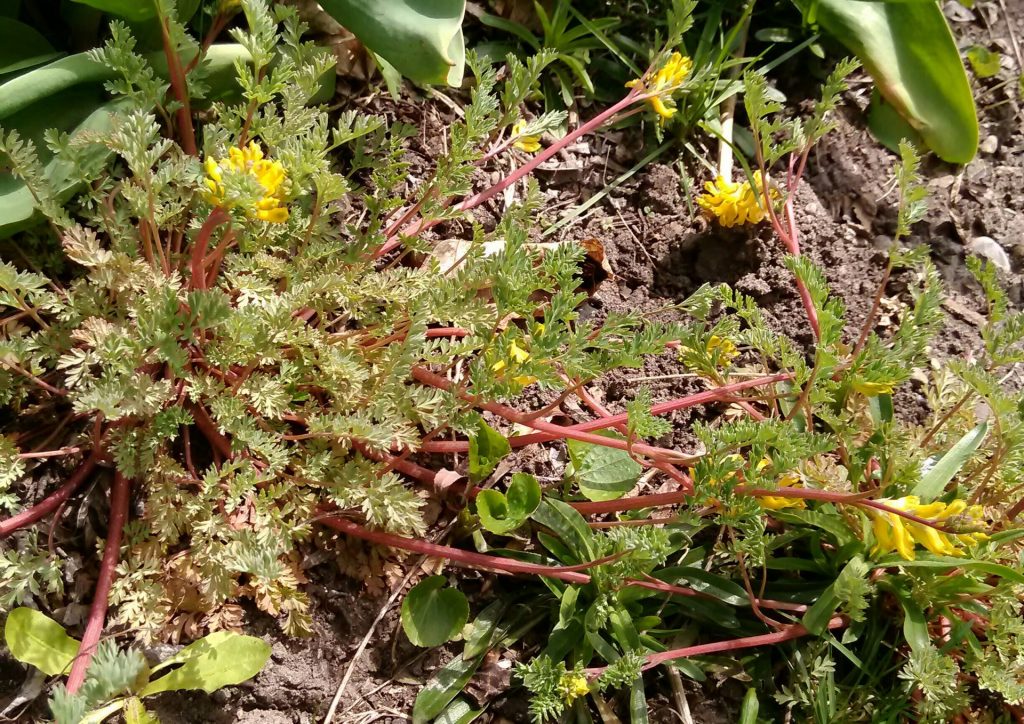
The picture is of a plant with red, fleshy stalks and early blooming yellow flowers. I haven’t been able to identify it and thus know whether to eradicate it as there are a few in our Urban garden in Peterborough. Secondly, we have lived here for 18 years and have established many varieties of tulips. This is the first year that some creature has decided to chew off the flower stalks and often take away the buds. Who is the likely culprit and is there a good defense?
Plant identification.
Although we cannot say with 100% certainty without seeing the plant, this could be purslane, or Portulaca oleracea. https://en.wikipedia.org/wiki/Portulaca_oleracea
Who is eating your tulip stalks and buds? Just about any rodent and deer in the
neighborhood would love to have a snack of your tulip stalks and buds (and of course squirrels love the
bulbs as well). Peterborough is pretty urban, so unless you live near a park or ravine, maybe you don’t
have deer, but you have squirrels, chipmunks, rabbits, voles, and groundhogs.
In 2013, the same question was asked of a Master Gardener, and they suggested interplanting your tulips with other bulbs that are not edible to rodents, which is a great idea. Their reply:
For a long-term solution, planting foods the rodents dislike in the garden itself helps discourage the
creatures from eating your bulbs. Try inter-planting these animal-repelling plants next to your treasured
tulips for best results.
Alliums fall into the same family as onions, garlic and chives, all of which repel rabbits and squirrels.
Depending on the variety, allium grows up to 59 inches in height in hardiness zones 4 to 8. The foliage
looks similar to an onion with long, narrow leaves. In early summer, the plant sports blooms consisting of
small white, pink or purple flowers that form a large rounded cluster reaching up to 15 inches in
diameter.
Another alternative are hyacinths, that bloom with plenty of fragrance. Rabbits and squirrels stay away
from the plant, making it ideal for early spring gardens. The perennial flower thrives in hardiness zones 3
to 8 where it grows up to 10 inches in height with tightly packed spikes of highly fragrant blossoms.
Choose varieties such as Carnegie hyacinth for white blooms, pink pearl for pink blossoms or blue jacket
for purplish-blue blooms. Plants the allium and hyacinth bulbs, like the tulips, in full sun in well-drained
soil in the fall.
Hope this helps, good luck!

